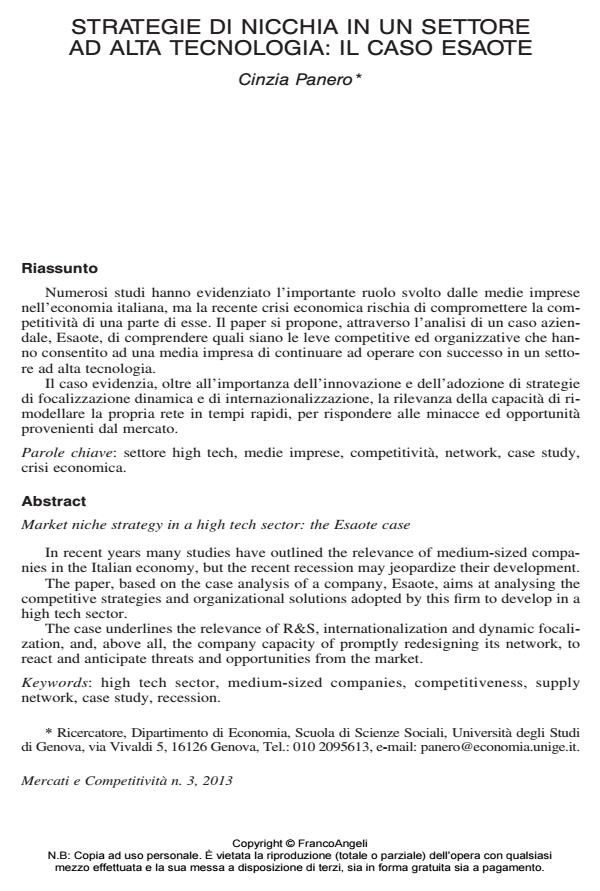Market niche strategy in a high tech sector: the Esaote case
Journal title MERCATI E COMPETITIVITÀ
Author/s Cinzia Panero
Publishing Year 2013 Issue 2013/3
Language Italian Pages 24 P. 127-150 File size 519 KB
DOI 10.3280/MC2013-003008
DOI is like a bar code for intellectual property: to have more infomation
click here
Below, you can see the article first page
If you want to buy this article in PDF format, you can do it, following the instructions to buy download credits

FrancoAngeli is member of Publishers International Linking Association, Inc (PILA), a not-for-profit association which run the CrossRef service enabling links to and from online scholarly content.
In recent years many studies have outlined the relevance of medium-sized companies in the Italian economy, but the recent recession may jeopardize their development. The paper, based on the case analysis of a company, Esaote, aims at analysing the competitive strategies and organizational solutions adopted by this firm to develop in a high tech sector. The case underlines the relevance of R&S, internationalization and dynamic focalization, and, above all, the company capacity of promptly redesigning its network, to react and anticipate threats and opportunities from the market.
Keywords: High tech sector, medium-sized companies, competitiveness, supply network, case study, recession
Cinzia Panero, Strategie di nicchia in un settore ad alta tecnologia: il caso Esaote in "MERCATI E COMPETITIVITÀ" 3/2013, pp 127-150, DOI: 10.3280/MC2013-003008